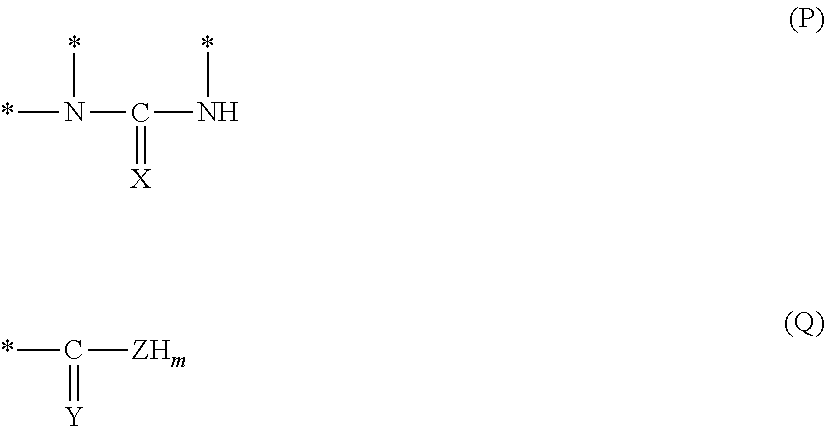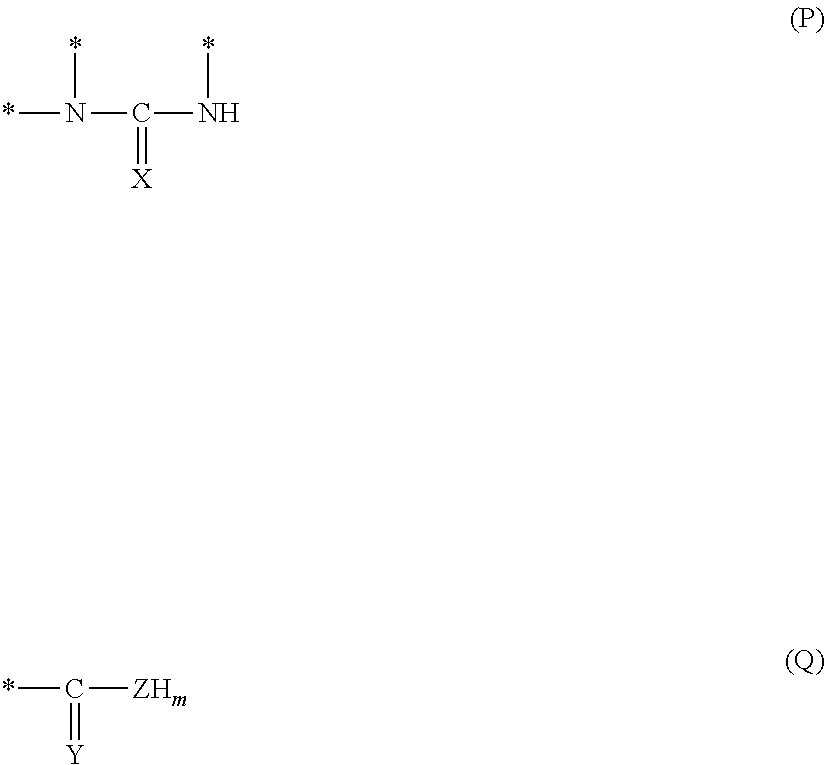Aqueous emulsion and adhesive using same
- Summary
- Abstract
- Description
- Claims
- Application Information
AI Technical Summary
Benefits of technology
Problems solved by technology
Method used
Image
Examples
example 1
Synthesis of Em-1
[0110]An amount of 220 g of ion-exchanged water and 20.9 g of Kuraray Poval 28-98 (manufactured by Kuraray Co., Ltd. and having a degree of saponification of 98.5 mol % and an average degree of polymerization of 1,700) were charged into a 1-L glass polymerization reaction vessel equipped with a reflux condenser, a dropping funnel, a thermometer, and a nitrogen inlet. The mixture was stirred at 95° C. for 2 hours to fully dissolve the contents. Thereafter, 0.3 g of sodium acetate (NaOAc) was added to the polymerization reaction vessel, and dissolved into the mixture to obtain an aqueous PVA solution. The aqueous PVA solution was cooled, and charged into a polymerization reaction vessel that had been purged with nitrogen. After the solution was heated to 60° C. under stirring at 200 rpm, 2.4 g of a 20% aqueous solution of tartaric acid and 3.2 g of a 5% hydrogen peroxide solution (each in an amount of 0.015 in terms of a molar ratio with respect to the total amount of...
example 2
Synthesis of Em-2
[0112]An amount of 200 g of ion-exchanged water and 21 g of an ethylene-modified PVA having a degree of polymerization of 1,700, a degree of saponification of 95 mol %, and a degree of ethylene modification of 5 mol % were charged into a 1-L glass polymerization reaction vessel equipped with a reflux condenser, a dropping funnel, a thermometer, and a nitrogen inlet. The mixture was stirred at 95° C. for 2 hours to fully dissolve the contents. Thereafter, 0.3 g of sodium acetate (NaOAc) was added to the polymerization reaction vessel, and dissolved into the mixture to obtain an aqueous modified PVA solution. The aqueous ethylene-modified PVA solution was cooled, and charged into a polymerization reaction vessel that had been purged with nitrogen. After the solution was heated to 60° C. under stirring at 200 rpm, 2.4 g of a 20% aqueous solution of tartaric acid and 3.2 g of a 5% hydrogen peroxide solution (each in an amount of 0.015 in terms of a molar ratio with resp...
example 3
[0113]An aqueous emulsion (Em-3) was obtained in the same manner as in Example 1, except that the acrylic acid was replaced with acrylamide. The evaluation result for the emulsion polymerization stability of Em-3 is presented in Table 1. Em-3 was used to prepare an adhesive-3, using the same method used in Example 1. The adhesive-3 was then evaluated for adhesiveness under various conditions, as well as for heat resistance, stain resistance of a coating film, and viscosity stability. The results are presented in Table 2.
PUM
| Property | Measurement | Unit |
|---|---|---|
| Percent by mass | aaaaa | aaaaa |
| Percent by mass | aaaaa | aaaaa |
| Temperature | aaaaa | aaaaa |
Abstract
Description
Claims
Application Information
 Login to View More
Login to View More - R&D
- Intellectual Property
- Life Sciences
- Materials
- Tech Scout
- Unparalleled Data Quality
- Higher Quality Content
- 60% Fewer Hallucinations
Browse by: Latest US Patents, China's latest patents, Technical Efficacy Thesaurus, Application Domain, Technology Topic, Popular Technical Reports.
© 2025 PatSnap. All rights reserved.Legal|Privacy policy|Modern Slavery Act Transparency Statement|Sitemap|About US| Contact US: help@patsnap.com



